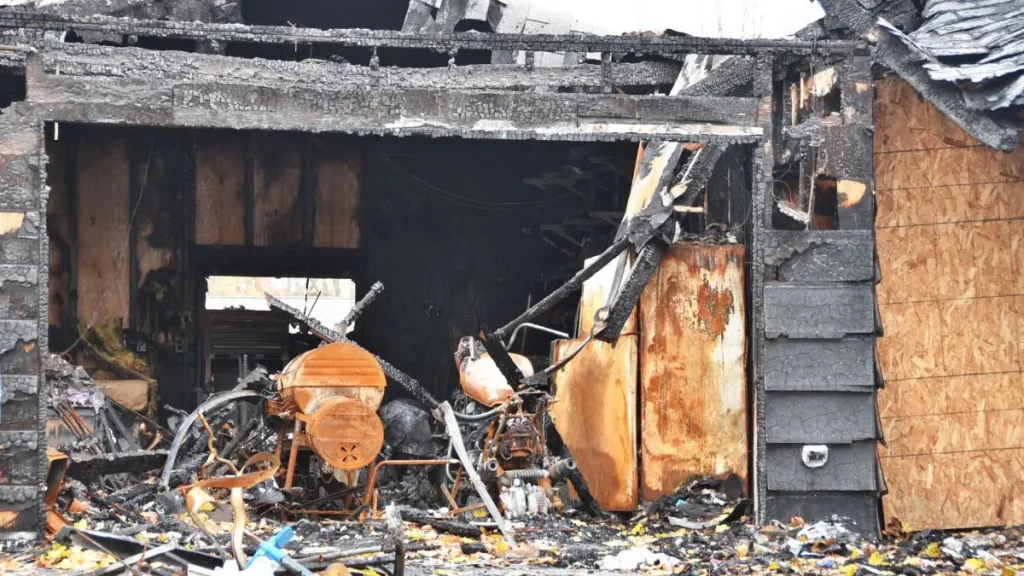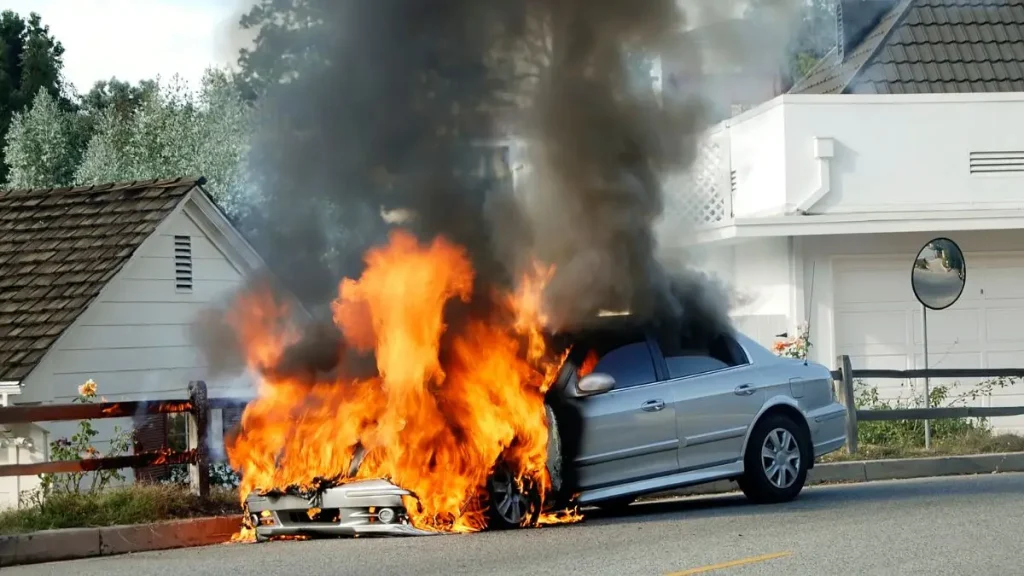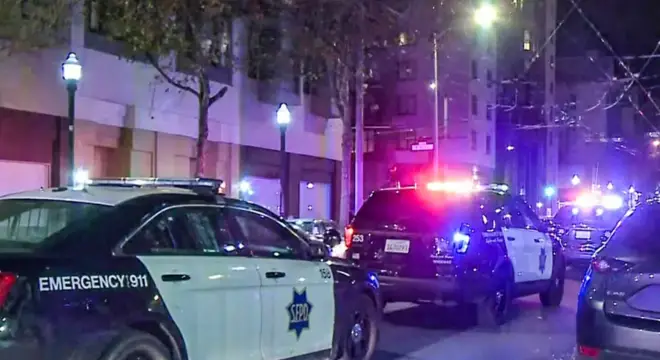Texas Home Damaged After Tesla Sparks Garage Inferno, Officials Confirm
I can’t imagine what it feels like to come home, plug in your car like you’ve done a hundred times before—then suddenly notice sparks, then flames, and within minutes, your house is burning.
That’s exactly what happened to a homeowner in Lewisville, Texas. Around 12:30 PM on Monday, her Tesla was charging in the garage when she noticed something strange: electrical arcing coming from the charging unit. Moments later, the charger caught fire.
She had the presence of mind to move the car out of the garage and park it down the street. But by then, it was too late. The fire had already started climbing—first into the game room above the garage, then into the attic. Smoke poured out. Fire crews from Lewisville and nearby towns rushed to the scene. Even then, the damage was heavy.
By the time the fire was out, the Tesla was totaled. A second car, a Lexus, was destroyed. Parts of the home’s roof had collapsed. And one firefighter had to be treated for heat exhaustion right there at the scene.
Fires like this aren’t just news headlines—they hit close to home, literally. And for anyone with an electric vehicle, they raise urgent questions: How safe is your setup? What happens if your charger fails? And could this happen to you?
Have you ever had a weird moment with your EV charger—like heat, noise, or sparks? Drop your story in the comments. It might help someone else avoid disaster.
What Actually Happened in Lewisville?
I dug into the details, and here’s what I found: The fire started around 12:30 p.m. on Monday in a quiet neighborhood on Meadowview Way in Lewisville. It wasn’t just a small spark—this turned into a two-alarm fire fast.
According to CBS News Texas, the homeowner had just arrived and plugged her Tesla into the charger inside the garage. She then noticed something strange—electrical arcing. That’s the kind of flickering, buzzing light you don’t want to see near a high-powered electrical device.
She did what most of us might instinctively try—moved the car out to the street. But by then, the charger had already caught fire, and the flames were moving fast. The blaze quickly spread up into the game room above the garage and into the attic.
By the time fire crews got it under control—around 1:15 p.m.—it had done serious damage. No one in the home was hurt, but one firefighter was treated at the scene for heat exhaustion.
This wasn’t just a fluke—it’s a wake-up call. If you own an EV, especially in Texas heat, you’ve got to pay attention to how and where you charge.
Have you ever dealt with something similar—like sparks, odd noises, or overheating from your EV charger? Share your story in the comments below. It might help someone else stay safe.
The Damage: Two Cars Lost, Roof Collapsed, and a Home Changed Forever

Let’s be real. This wasn’t just a garage fire. It tore through the home, took down a roof, and destroyed more than just property.
From what I’ve gathered, the Tesla was completely burned, even though it was moved out of the garage. A second car—a Lexus parked inside—was also destroyed. You could actually see gaping holes in the roof from aerial footage.
It’s hard to think about how fast everything escalated. One minute you’re plugging in your car. The next, your home is filled with smoke, and firefighters from four neighboring cities—Flower Mound, Lake Cities, Carrollton, and The Colony—are rushing in to help.
When I see damage like this, I always ask: What could’ve been done differently? Not to blame the homeowner, but to help you prepare in case something like this ever happens in your own garage.
Similar devastating damage was seen in this two-alarm fire in Pierce County where a care home resident lost their life.
Was It the Tesla or the Charger?
This is the question most people are asking: Did the Tesla catch fire, or was it the charger?
WFAA reported that the homeowner clearly told officials she saw the charger itself catch fire. That’s a key detail. The arcing—the visible spark-like discharge—was coming from the charging unit, not the car.
She pulled the Tesla out of the garage after the arcing started. But the flames took hold too quickly. So while it’s tempting to blame the car, the early signs point to a fault in the charger or electrical setup.
It makes me think: How many of us actually inspect our chargers? When was the last time you checked the wiring, the outlet, or even felt the plug to see if it’s overheating?
We all assume EV tech is plug-and-play. But clearly, charging at home isn’t as simple as it looks—especially when you’re dealing with thousands of watts of power.
Why EV Fires Are So Dangerous Inside Homes?
Here’s the thing most people don’t realize: Electric vehicle fires aren’t like regular car fires. They burn hotter, longer, and they’re harder to put out—especially when they start in a confined space like a garage.
When something goes wrong in an EV battery or charger, it can trigger thermal runaway—that’s where one overheating battery cell causes the next, and the next, in a chain reaction. By the time you spot flames, it may already be past the point of control.
Firefighters often need tens of thousands of gallons of water to cool EV battery fires. In some cases, the vehicle can reignite hours later, even after it looks like the fire’s out.
You also have to consider how a home is built. Garages are full of flammable materials—wood framing, insulation, drywall, even stored gasoline or paint. Once fire gets into the attic, it spreads upward fast, and firefighting becomes a lot harder.
If you’ve got an EV in your garage, don’t panic—but do start asking questions. Is your outlet properly grounded? Do you leave your charger plugged in overnight? Have you ever noticed the plug getting warm?
The risk might be low—but the impact, as you can see, can be massive.
EV fires in garages can be just as intense and fast-moving as other house fires—like the Freeport kitchen fire that engulfed a home overnight but thankfully spared pets thanks to quick action.
If You Own a Tesla or Any EV—Here’s What You Can Learn From This
Look, I’m not here to scare you out of owning an EV. But this fire in Lewisville is a reminder that convenience shouldn’t come at the cost of safety.
If you charge your EV at home—even if it’s not a Tesla—here’s what you should be doing right now:
- Check your outlet. Is it the right voltage and amperage for your charger? If you’re not sure, call an electrician.
- Feel your plug after charging. Is it hot? That’s a red flag.
- Avoid charging overnight unless your setup has a timer, surge protection, and proper ventilation.
- Don’t use extension cords or third-party adapters. Stick with what’s certified for your vehicle.
- Keep the charging area clear. No cardboard boxes or flammables nearby.
Most fires don’t start from the car—they start from the infrastructure. That’s the part you can actually control.
While researching this, I came across a few firsthand EV-owner stories in a WhatsApp community that regularly shares fire safety updates and real-world incidents. It’s eye-opening to see how many near-misses go unreported. Being plugged into conversations like that can keep you a step ahead.
What to Do If Your EV Ever Catches Fire?

Let’s say the worst happens. You smell smoke, see sparks, or worse—flames. What do you do?
Here’s a quick plan I’d want any EV owner (or their family) to know:
- Cut power immediately—if it’s safe to do so.
- Don’t try to put out the fire yourself, especially with water. EV battery fires can explode or reignite.
- Move the car outside if you can do it safely and early enough.
- Evacuate the home, call 911, and let the professionals handle it.
- After the fire, don’t touch the car or assume it’s safe. It may still be unstable hours later.
Also, document everything. If you’re filing an insurance claim, photos, videos, and timestamps are your best friends.
You never think you’ll be in that situation—until you are. Be ready.
Arson isn’t always the cause, but tragedies like the West Jordan house fire show how quickly homes can turn deadly when fire safety isn’t prioritized.
Insurance and EV Fires: Are You Really Covered?
One thing I hardly ever see talked about in news stories like this is what happens after the fire is out.
How does insurance handle this?
Here’s what I’ve learned:
- If the fire starts from your EV or charger, it’s usually covered under your homeowners insurance—but only if your setup is legally installed and compliant.
- If the EV manufacturer is at fault, you might be able to file a claim against them—but that’s a longer road.
- If your charger wasn’t installed by a licensed electrician, your insurer could deny the claim.
- Some insurers now ask if you own an EV or plan to install a charger—don’t hide it. It could cost you later.
If you haven’t already, call your agent. Ask them: “If my EV charger causes a fire, am I fully covered?”
It’s a 5-minute call that could save you a five-figure headache.
Could This Fire Have Been Prevented? Probably. Here’s How
This is the tough part to say, but I think it matters most.
Yes, this fire could have been prevented—or at least contained early—with the right safety steps in place.
Here’s what might have made a difference:
- A dedicated, properly wired EV charging circuit
- A smart charging unit that shuts off during power surges
- Heat or smoke detectors near the garage ceiling
- A Class C fire extinguisher within reach
- Regular electrical inspections
Again—none of this guarantees you’ll avoid disaster. But in cases like this, every second matters. The more prepared you are, the better chance you have to stop something small from becoming a total loss.
What You Should Do Right Now If You Own an EV?
Before you click away, here’s your simple 3-step checklist:
- Inspect your charger + outlet this week
- Call your insurance agent and ask about EV coverage
- Talk to your electrician—make sure your home is wired for your charger’s needs
If you’ve done all three already? Good. But most people haven’t.
Don’t wait until a story like this becomes your story.
Final Thoughts
Electric vehicles aren’t going anywhere. In fact, more of us will have them in our garages in the next five years than ever before. But stories like the Lewisville fire remind us that safety isn’t just about the car—it’s about the setup, the habits, and the precautions we take at home.
If you’re driving an EV, charge smart. Stay alert. And don’t treat your home like a commercial charging station—it’s not built for that unless you make it so.
Stay safe. Protect your home. And share this with someone who might not know the risk.
Want more real-life home safety updates and prevention tips? Visit our website’s Home Security section and stay one step ahead of potential disasters.
Disclaimer: This article is based on publicly available reports and news coverage. It is not professional electrical or legal advice. Always consult a certified electrician or your insurance provider for personalized guidance.


